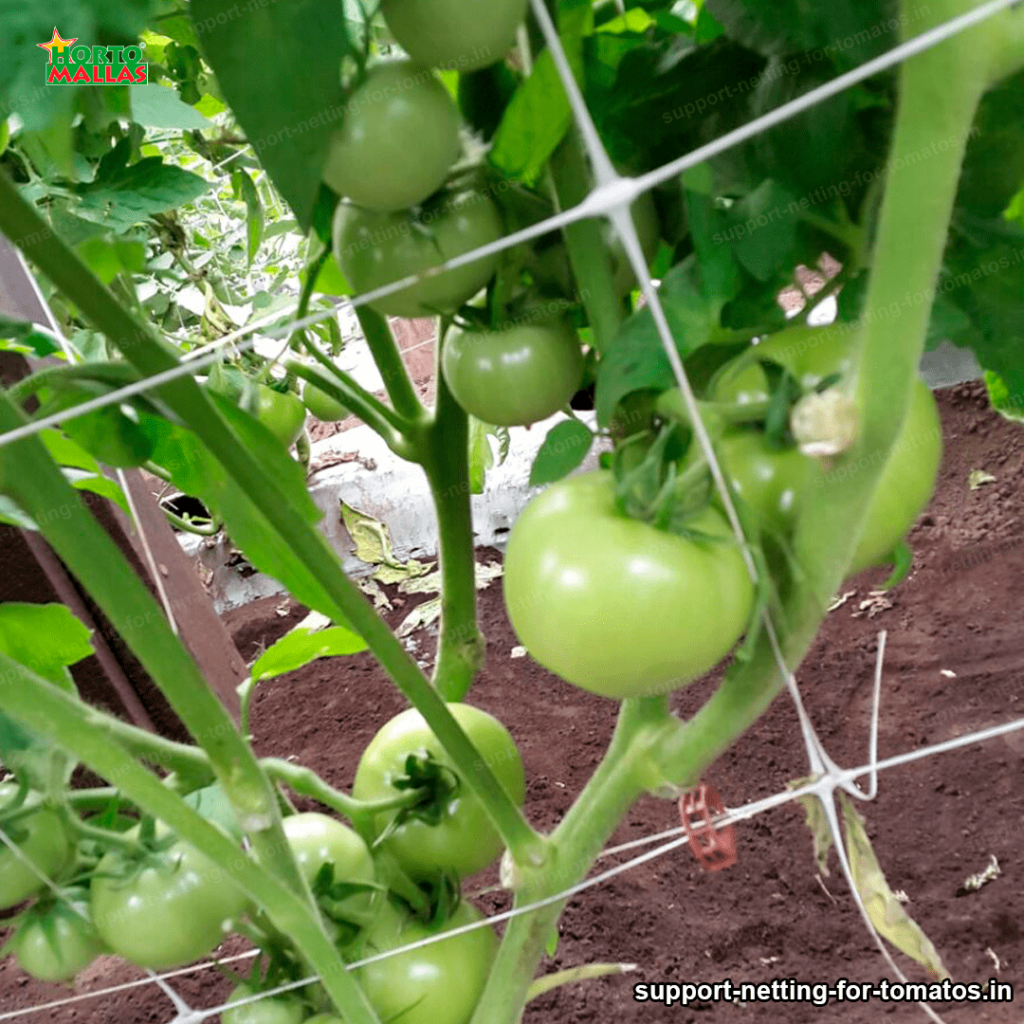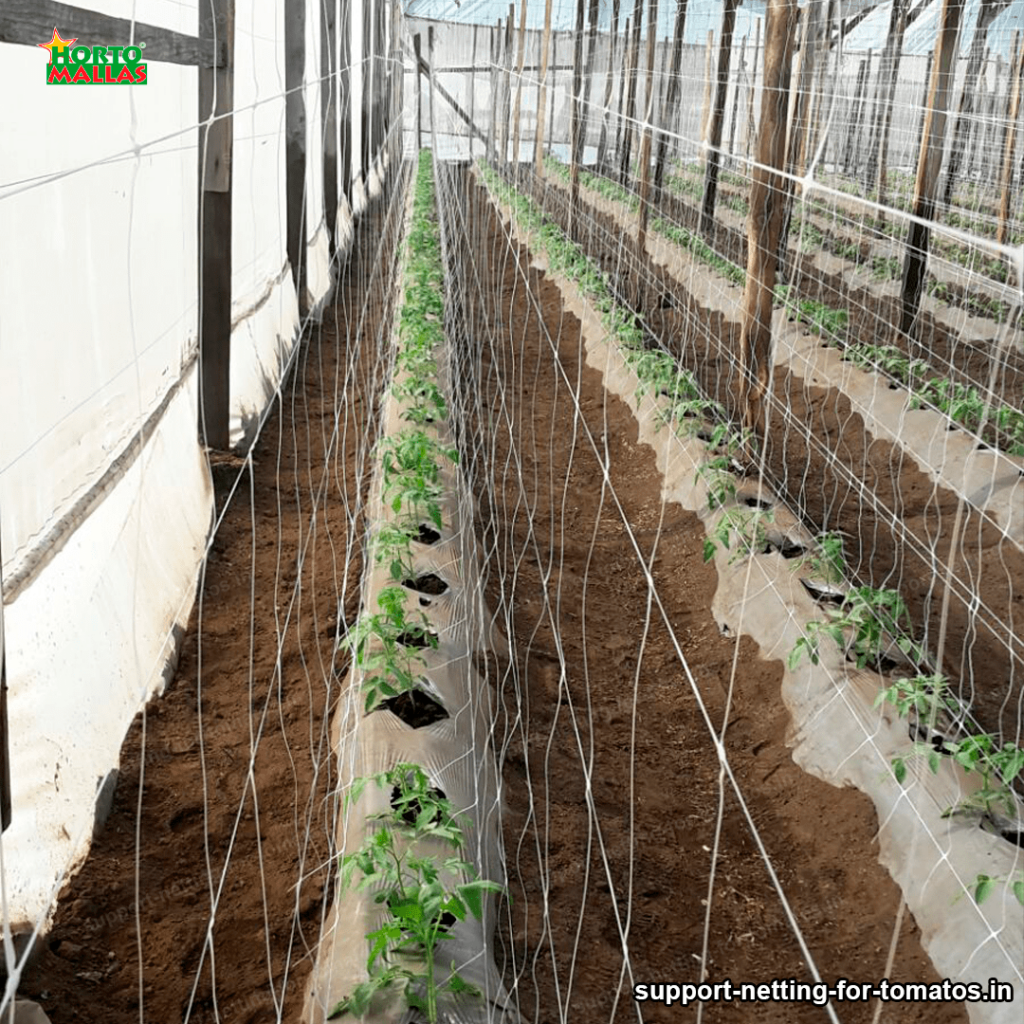Tomato growing can benefit greatly from the right environment. An optimal environment will improve the quality of tomatoes and the quantity of tomatoes produced.
The most important approach to a good tomato crop is that of temperature. Tomatoes thrive in temperatures above 18 degrees Celsius. This is where they begin to develop to full maturity. If the temperature drops too low, tomatoes will not grow. For this reason, a good controlled environment is vital to the success of a tomato crop.
In addition to temperature, light is optimal for a tomato crop. Tomato plants need daylighting of 8-12 hours per day to grow and produce the best results. This can also increase plant growth, as light aids photosynthesis, which is a chemical process in which the plant takes energy from light to convert it into food for the plant.
A point also to consider important for a good environment for a tomato crop is soil moisture. The proper moisture level for a tomato plant should be between 60 and 85 percent. If there is not enough moisture, the tomatoes will dry out and will not produce the best results. If there is not enough moisture, the soil will dry out and drown the tomatoes. A good solution for this is watering with an irrigation system, which will keep the soil constantly moist. In addition to temperature, light and humidity, other environmental factors can affect the tomato crop. Wind can damage plants if there is no protection, especially in the ripening season. Animals can also damage tomatoes if there are no protective measures. Insects are another problem, as they can carry a variety of diseases and pests that can affect the crop.

Parameters to be considered for a healthy tomato crop.
A good healthy tomato crop starts with the right parameters. Problems related to tomato health can arise due to a variety of issues, such as inadequate nutrient supply, poor environmental conditions, infectious diseases and pests. Below are some important parameters to consider for a healthy tomato crop.
First, the growing medium for tomatoes is vital. The right growing medium will allow the tomato roots to access the required amount of water and oxygen. Therefore, the chosen soil should be light, with good drainability, stability of structure suitable for supplying water and necessary nutrients. In addition, the soil should contain sufficient organic matter to maintain a good growth response and nutritional needs for good development and production in hives.
Secondly, nutrient supply is also important to ensure a healthy crop. While nutritionists recommend the use of chemical fertilizers to ensure adequate nutrient supply, it is also recommended to resort to organic inputs such as manures, composts, etc. to provide adequate nutrition to tomatoes. Also, ensuring the availability of essential minerals such as calcium, iron, magnesium, zinc and potassium is essential for healthy production and development.
An additional important parameter to consider is proper environmental conditions. Tomatoes need varied growing temperatures to produce well. If the temperature is too low, growth will be slow, if the temperature is too high the fruits will be damaged. Therefore, it is advisable for healthy growth to maintain an average temperature between 25-30°C during the day and a temperature slightly below 20°C during the night.
In addition, tomatoes need a good amount of sunlight for development.
Under ideal conditions this amount is at a level between 8-12 hours per day. If there is a lower or higher level of light, this will cause problems in tomato growth, such as poor fruit development and production.
In addition, disease management is another important component of a healthy crop. There are numerous diseases that affect the tomato crop and some of them are caused by web pathogens such as fungi, viruses, bacteria, etc. To prevent these diseases growers should carry out crop inspections frequently to identify any signs of disease in time. In addition, one should avoid planting previous years’ seeds in the new field and maintain a proper fertilizer schedule.
Pest control is necessary for a healthy crop. This means identifying, controlling and preventing pest infestation before the tomato crop cycle is affected. The use of cultural methods to control pests, such as soil tillage, weed maintenance, as well as chemical tools such as insecticides, is recommended.
In general, growers should pay attention to these parameters to have a healthy tomato crop. If the parameters are adjusted properly, growers will see healthy and optimized production and higher productivity.

Environmental factors can affect a tomato crop.
Environmental factors are essential to the success of a tomato crop. Without proper temperature, humidity and light levels, tomatoes would not grow and produce the desired fruit. Climate, soil and irrigation are three key environmental factors that significantly influence tomato growth and yield.
Climate: Tomatoes are planted and grown in a variety of climatic conditions. They are best adapted to temperate climates with hotter summers and tend to grow more slowly in cold climates. Temperature is one of the most important environmental factors for proper tomato growth. Warm temperatures increase plant growth and fruit set, while cool temperatures inhibit growth and production. Optimum temperatures for tomato growth range from 20 to 25 degrees Celsius. The effects of higher temperatures are unknown because excessive heat and dryness harden and dry ripe tomatoes, while excessive heat and humidity soften and destroy fruit.
Soil: Soil is a key factor in tomato growth and yield. It should have a pH between 6 and 7, rich in nutrients and well drained. Sandy soils are suitable for growing tomatoes because they allow good drainage, which reduces the risk of diseases induced by excess moisture. The grower who wants to grow tomatoes should optimize the soil so that it contains the nutrients needed for healthy tomato growth. This can be done by manuring the soil and applying fertilizers and compost.
Irrigation: The amount of water tomatoes receive is also an important environmental factor. Adequate irrigation increases growth and fruit production, but excessive irrigation promotes diseases such as leaf spot. Tomato plants require regular water to optimize growth and fruit production. The amount of water depends on the time of year, temperature and soil type. To avoid disease, it is recommended to give water to the base of the plant with a drip hose.
Additional environmental factors:
In addition to climate, soil and irrigation, other environmental factors significantly affect tomato yield and growth. These factors include sunlight, tree cover, insects and other organisms, pollution, high winds, frost, and salinity. Sunlight increases photosynthesis and growth of tomato plants, while shade reduces yield. Contamination affects tomato quality and should be minimized for maximum quality. Insects and other organisms can affect tomatoes by causing plant damage and even fruit loss. Frost and high winds can damage plants and reduce production. Finally, soil salinity reduces nutrient uptake and inhibits tomato growth.
In summary, environmental factors are vital to the success of a tomato crop and can significantly influence crop growth and yield. Climate, soil and irrigation are three of the key factors that influence tomato growth and production. In addition, other factors such as light, tree cover, insects, pollution, high winds, salinity and frost also influence tomato growth and production. Therefore, it is important to know and understand environmental factors to produce high quality tomatoes and obtain optimum results.